
Image 011209-01-01
Used between 1757 and 1795, blue under glaze.
The factory was founded by Wilhem Theodor von Rotberg who was president of the chamber in Gotha. At first the factory was only able to produce grey-tinted rough porcelain that looked more like fine stoneware but in 1772 the first translucent items with a cream-colored glaze were available. The quality of the items quickly earned the factory a very good reputation and this around 1775 resulted in first exports. The von Rotberg factory was one of the locations for porcelain production in Thuringia and it at times only employed three workers. Over time the economic viability was too small and the factory was leased to its workers.
The workers of the factory were organised in a consortium under the name of Schulz & Co. which was founded by the painter Christian Schulz, J. A. Brehm and the composer Och. All went well for some time but von Rotberg died in 1795. Despite the right of first refusal, the widow sold the factory to the heriditary Prince August von Sachsen-Gotha in the year 1802.
Interested in the business but not able to lead such an enterprise himself, August von Sachsen-Gotha at first employed his former valet as supervisor. Friedrich Egidius Henneberg who was born on June 18th 1756 soon convinced as businessman and became proprietor in 1804, using the name of Porzellanfabrik Henneberg and continuing business alone until 1807 when he was joined by his son. This resulted in a new company registration as Henneberg & Co., which seems peculiar as most people would think they would have changed the name to Henneberg & Sohn.
After Henneberg died on May 8th 1834, his son Johann Christoph Henneberg continued to run the factory. The next years saw the factory slowly expand and after starting off with two kilns and less than twenty workers it already utilized three kilns in 1837. Around 1850 the business employed just over one hundred people and was very successful; the time between 1840 and 1860 is often quoted to have been their best period. Johann Christoph Henneberg died 1860 and his successor, August Henneberg, kept the factory in family hands until 1883 when he also died.
Note that the factory located in Gotha should not be confused with the Porzellanfabrik Ilmenau Graf von Henneberg in Ilmenau (Thuringia); the factories are not related.
The Henneberg heirs sold the factory to the Jewish Simson brothers, who also owned the famous weapons factory in Suhl. The brothers used the factory to produce a wide array of various porcelain household items decorated in either in Zwiebelmuster ("Blue Onion") or Strohblume ("Strawflower") but next to the many different items they also produced a small number of tea, coffee and dinner sets. The constantly expanding business soon proved too small for the old building and so the whole factory was in 1912 relocated to new premises at the 'Nützleber Weg' in Gotha. The company employed over 200 workers in 1913 and was able to successfully continue production until around 1936 when the first waves of the anti-jewish policy propagated by the National Socialist Party resulted in declining business. In 1937 employment had dropped to around 100 people; the business was liquidated under Nazi law the same year.
The "R" and "R." marks often get confused with those of the Aelteste Volkstedter Porzellanmanufaktur or the marks used by the Greiner factory in Rauenstein while the "G" and "G." marks often get confused with those of the Greiner company in Gera.

Image 011209-01-01
Used between 1757 and 1795, blue under glaze.

Image 011209-01-02
Used between 1757 and 1795, blue under glaze.

Image 011209-01-03
Used between 1757 and 1795, blue under glaze.

Image 011209-01-04
Used between 1757 and 1795, blue under glaze.

Image 011209-01-05
Used between 1757 and 1795, blue under glaze.

Image 011209-01-06
Used between 1757 and 1795, blue under glaze.

Image 011209-01/02-01
Used between 1757 and 1795, blue under glaze.

Image 011209-01/02-02
Used between 1757 and 1795, blue under glaze.

Image 011209-02-01
Used between 1795 and 1804, blue under glaze.

Image 011209-02-02
Used between 1795 and 1804, blue under glaze.

Image 011209-02-03
Used between 1795 and 1804, blue under glaze.
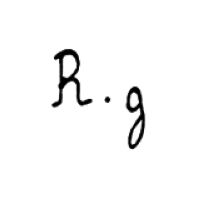
Image 011209-02-04
Used between 1795 and 1804, blue under glaze.

Image 011209-03-01
Used between 1802 and 1834, blue under glaze; after 1813 in black, gold or pale yellow over glaze.

Image 011209-03-02
Used between 1802 and 1834, blue under glaze; after 1813 in black, gold or pale yellow over glaze.

Image 011209-03-03
Used between 1802 and 1834, blue under glaze; after 1813 in black, gold or pale yellow over glaze.

Image 011209-03-04
Used between 1805 and 1834.
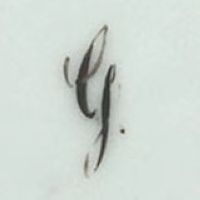
Image 011209-03-05
Used from 1813.
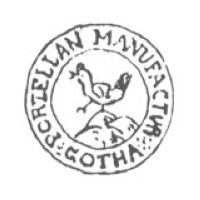
Image 011209-03-06
Used between 1834 and 1860.
(Picture: Rachel, Pam & Bruce)
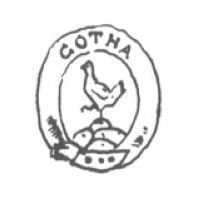
Image 011209-03-07
Used between 1860 and 1883.
(Picture: Rachel, Pam & Bruce)
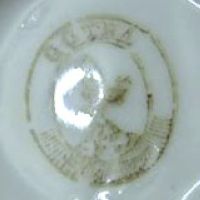
Image 011209-03-08
Used between 1860 and 1883.
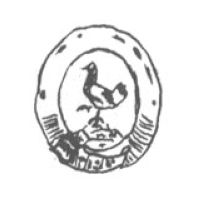
Image 011209-03-09
Used between 1860 and 1883.

Image 011209-03-10
Used between 1875 and 1883, registered at the Herzogliches Kreisgericht zu Gotha as number "5" on June 12th 1875.

Image 011209-04-01
Used between 1883 and 1934.
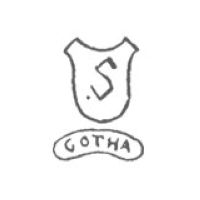
Image 011209-04-02
Used between 1883 and 1934.
© 2004-2025 C.S.Marshall, all rights reserved